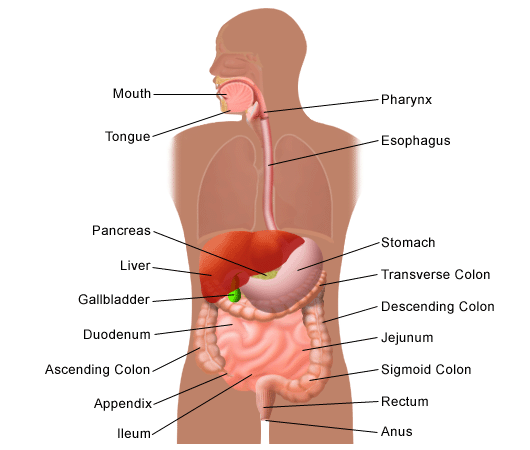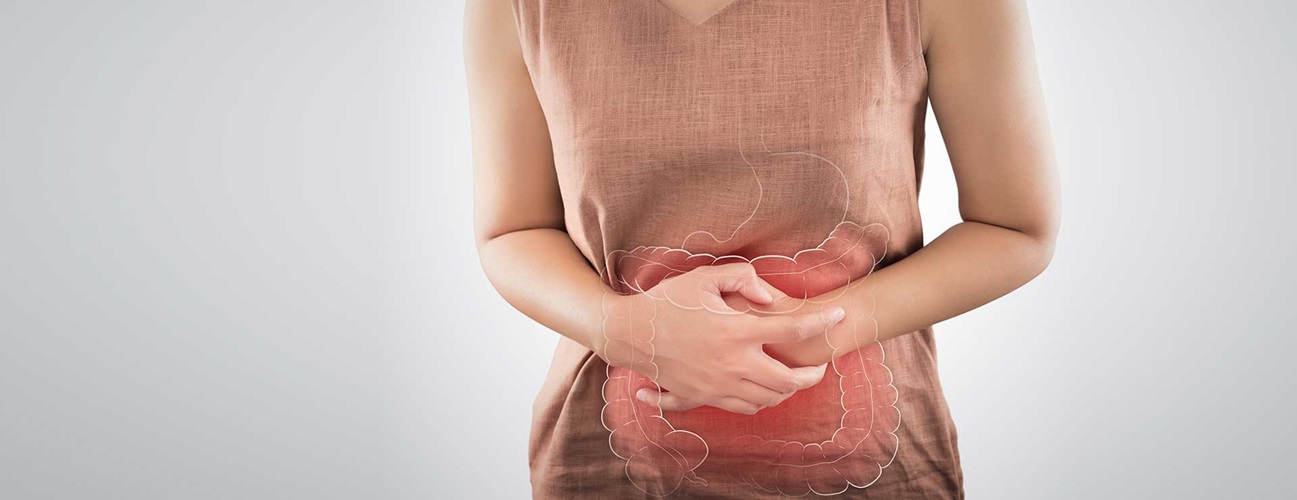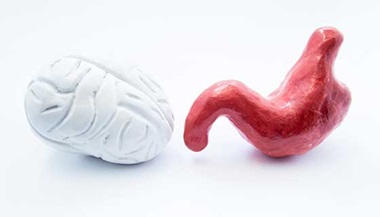Constipation
What is constipation?
Constipation is a condition in which a person has uncomfortable or infrequent bowel movements. Generally, a person is considered to be constipated when bowel movements result in passage of small amounts of hard, dry stool, usually fewer than three times a week. However, normal stool elimination may consist of having a bowel movement three times a day or three times a week; it depends on the person.
About 4 million people in the United States have frequent constipation. Constipation is the most common gastrointestinal complaint, resulting in 2.5 million doctor visits annually.

What causes constipation?
Hard, dry stools are the result of the colon absorbing too much water. Normally, as food moves through the colon (also known as the large intestine) the colon absorbs water while forming stool (waste products). Muscle contractions then push the stool toward the rectum, and, by the time the stool reaches the rectum, most of the water has been absorbed, making the stool solid.
When the colon's muscle contractions are slow or sluggish, the stool moves through the colon too slowly, resulting in too much water being absorbed. Some of the most common causes of constipation include the following:
-
Medications
-
Lack of exercise
-
Not enough liquids
-
Not enough fiber in the diet
-
Ignoring the urge to have a bowel movement
-
Changes in habits or lifestyle, such as travel, pregnancy, and old age
-
Problems with intestinal function
-
Abuse of laxatives
What are the symptoms of constipation?
The following are the most common symptoms of constipation. However, each individual may experience symptoms differently. Symptoms may include:
-
Difficult and painful bowel movements
-
Bowel movements fewer than three times a week
-
Feeling bloated or uncomfortable
-
Feeling sluggish
-
Abdominal pain
The symptoms of constipation may resemble other medical conditions or problems. Always consult your doctor for a diagnosis.
How is constipation diagnosed?
The tests performed by a doctor will depend on the duration and severity of the constipation, since most persons experience constipation at one time or another. The doctor will also take into account the patient's age, and whether there is blood in the stool, recent changes in bowel habits, or weight loss.
Diagnosing constipation may include:
-
Medical history. The doctor will ask for a description of the constipation, including duration of symptoms, frequency of bowel movements, and other information to help determine the cause of the constipation.
-
Physical examination. A physical examination may also include a digital rectal examination (DRE), in which the doctor inserts a gloved, lubricated finger into the rectum to evaluate the tone of the muscle that closes off the anus. This examination also helps detect tenderness, obstruction, blood, amount and caliber of stool, and if enlargement of the rectum is present.
Other diagnostic tests may include:
-
Lower GI (gastrointestinal) series (also called barium enema). A lower GI series is a procedure that examines the rectum, the large intestine, and the lower part of the small intestine. A fluid called barium (a metallic, chemical, chalky, liquid used to coat the inside of organs so that they will show up on an X-ray) is given into the rectum as an enema. An X-ray of the abdomen shows strictures (narrowed areas), obstructions (blockages), and other problems.
-
Colonoscopy. Colonoscopy is a procedure that allows the doctor to view the entire length of the large intestine, and can often help identify abnormal growths, inflamed tissue, ulcers, and bleeding. It involves inserting a colonoscope, a long, flexible, lighted tube, in through the rectum up into the colon. The colonoscope allows the doctor to see the lining of the colon, remove tissue for further examination, and possibly treat some problems that are discovered.
-
Sigmoidoscopy. A sigmoidoscopy is a diagnostic procedure that allows the doctor to examine the inside of a portion of the large intestine, and is helpful in identifying the causes of diarrhea, abdominal pain, constipation, abnormal growths, and bleeding. A short, flexible, lighted tube, called a sigmoidoscope, is inserted into the intestine through the rectum. The scope blows air into the intestine to inflate it and make viewing the inside easier.
-
Colorectal transit study. This test shows how well food moves through the colon. The patient swallows capsules containing small markers which are visible on X-ray. The patient follows a high-fiber diet during the course of the test, and the movement of the markers through the colon is monitored with abdominal X-rays taken several times three to seven days after the capsule is swallowed.
-
Anorectal function tests. These tests diagnose constipation caused by an abnormal functioning of the anus or rectum.
Treatment for constipation
Specific treatment for constipation will be determined by your doctor based on:
-
Your age, overall health, and medical history
-
Extent of the condition
-
Your tolerance for specific medications, procedures, or therapies
-
Expectations for the course of this condition
-
Your opinion or preference
Most often, constipation can be treated through dietary and lifestyle changes, which relieve symptoms and help prevent the condition. Treatment may include:
-
Diet modifications. A diet with 20 to 35 grams of fiber daily helps in the formation of soft, bulky stool. While adding foods such as beans, whole grains, bran cereals, fresh fruits and vegetables is helpful in adding fiber to the diet. Limiting foods such as ice cream, cheeses, meats, and processed foods, which contain little or no fiber can also be helpful.
-
Laxatives. Laxatives may be prescribed after diet and lifestyle changes have failed to be effective.
-
Eliminating or changing medication
-
Biofeedback. Biofeedback is used to treat chronic constipation caused by anorectal dysfunction. This treatment retrains the muscles that control release of bowel movements.
Lifestyle changes, such as increased water and juice intake, regular exercise, and allowing enough time for daily bowel movements can be helpful.
What are good fiber sources?
| Foods | Moderate fiber | High fiber |
|---|---|---|
| Bread | Whole wheat bread, granola bread, wheat bran muffins, Nutri-Grain waffles, popcorn | |
| Cereal | Bran Flakes, Raisin Bran, Shredded Wheat, Frosted Mini Wheats, oatmeal, Muslix, granola, oat bran | All-Bran, Bran Buds, Corn Bran, Fiber One, 100% Bran |
| Vegetables | Beets, broccoli, brussel sprouts, cabbage, carrots, corn, green beans, green peas, acorn and butternut squash, spinach, potato with skin, avocado | |
| Fruits | Apples with peel, dates, papayas, mangos, nectarines, oranges, pears, kiwis, strawberries, applesauce, raspberries, blackberries, raisins | Cooked prunes, dried figs |
| Meat substitutes | Peanut butter , nuts | Baked beans, black-eyed peas, garbanzo beans, lima beans, pinto beans, kidney beans, chili with beans, trail mix |
What are complications of constipation?
Constipation can cause complications, such as hemorrhoids, which occur by straining to have a bowel movement, or anal fissures (tears in the skin around the anus) which occur when hard stool stretches the sphincter muscle. This can result in rectal bleeding.
Sometimes, straining also causes rectal prolapse, where a small amount of intestinal lining pushes out from the anal opening. Constipation may also cause fecal impaction, which occurs mostly in children and older adults. The hard stool packs the intestine and rectum so tightly that the normal pushing action of the colon is not enough to expel the stool.






